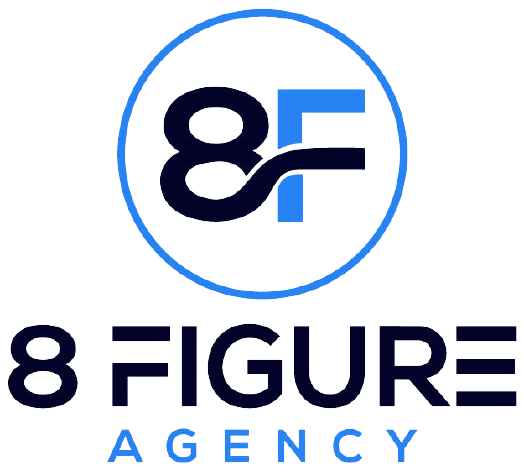
As a marketing agency owner, you know that crafting winning marketing proposals is crucial to the success of your business. Great marketing proposals can help you win new clients, secure more projects, and grow your revenue. However, creating winning marketing proposals can be a challenge, and it requires a lot of time and effort. In this guide, we’ll take you through the steps of crafting winning marketing proposals that will impress your clients and help you win more business.
Preparing to Write a Proposal
Before you start writing a marketing proposal, it’s important to take the time to prepare and gather all the necessary information for marketing project. Communicate with the client, analyze existing materials, and conduct your own research to gain a better understanding of the client’s industry, market trends, and competitors.
Understanding the Client’s Needs
Conducting a Client Needs Analysis
A client needs analysis helps you identify the specific challenges and pain points your client is facing. Here’s how to conduct one effectively.
- Identify the client’s current marketing strategies, initiatives, and any ongoing campaigns. Assess what is working well and where they may be experiencing difficulties.
- Ask the client about their main challenges and pain points in their marketing efforts.
- Evaluate the client’s current resources and capabilities anything that may impact their ability to implement marketing strategies.
Identifying the Client’s Goals
Ask your client about their short-term and long-term objectives. What do they want to achieve through this marketing campaign? Are they looking to increase sales, expand into new markets, build brand awareness, or something else?
Help your client to prioritize their goals and work with them to establish key performance indicators (KPIs) or metrics to measure the success of their marketing efforts.
Researching the Target Audience
Conduct market research on prospective clients and then analyze any available customer data, as this information can provide insights into the client’s target audience and help you understand their trends, preferences, pain points, and other relevant information that can inform your marketing proposal.
Developing detailed buyer personas that represent the client’s target audience allows you to tailor your marketing proposal to resonate with their needs. Always always check on the competition to keep tabs on what your client can leverage to differentiate themselves in the market. Not sure where to start? We can show you how.
Defining the Scope of Work
Defining the Project Scope
- Clearly articulate the specific goals and objectives of the project.
- Identify and be transparent about the boundaries and limitations of the project.
- Determine the specific requirements (tangible or technical) for the project.
- Identify and be transparent about any constraints or assumptions that may impact the project.
Outlining the Deliverables
Determine the key deliverables then break the main ones into smaller more manageable components. This will help establish clearer acceptance criteria and be able to identify codependency between deliverables.
Establishing a Timeline
Creating a timeline for the project helps manage expectations and ensures that both you and the client are aligned. Divide the project into logical phases or milestones and once a sequence of tasks has been agreed upon allocate a reasonable deadline to complete it by. This should account for unexpected delays or changes that may arise during the project.
Identifying Key Stakeholders
The key stakeholders will play a crucial role in providing feedback, writing proposals, making decisions, and ensuring project success. Clearly define their roles, responsibilities, expectations, and communication channels.
Preparing the Proposal
Crafting a well-structured and visually appealing marketing proposal template is essential to make a strong impression on potential clients.
Choosing the Right Format
Selecting the appropriate format for your marketing proposal template can greatly impact its readability and effectiveness.
- Digital vs. physical: A digital marketing proposal template can be shared easily via email or online platforms, while a physical marketing proposal template can create a tangible and professional impression during in-person meetings.
- Digital File format: Consider the file format that is most compatible with your client’s preferences. Common options include PDF, Word documents, or interactive presentation formats.
Creating a Proposal Template
Writing a marketing proposal template streamlines the proposal creation process, ensures consistency across different marketing proposals, and saves time. Incorporate your marketing agency’s branding elements, to maintain a consistent and professional appearance throughout the marketing proposal template.
Establish a clear structure with predefined sections and headings that can be customized based on the specific client’s needs. Including placeholder content provides a framework for presenting your ideas and solutions. This makes it easier to customize the template for each client while ensuring consistency in the overall structure.
Determining the Length
The length of your marketing proposal template should strike a balance between providing sufficient information and keeping the client engaged. Take into account any requirements specified by the client.
Consider the complexity of the project and the level of detail required to effectively communicate your solutions. More complex projects may require longer marketing proposals to explain the strategies, methodologies, and deliverables.
A concise and clear presentation however avoids unnecessary repetition or overly verbose language. It uses bullet points, tables, and visual elements to enhance readability and convey information efficiently.
Deciding on the Structure
The structure of your marketing proposal template should be logical, easy to navigate, and aligned with the client’s preferences. Include a
- Cover page: Marketing proposal title, Agency’s logo, Client’s name, Submission date.
- Executive summary: A brief overview of the marketing proposal
- Introduction
- Recap of Client’s needs, goals, and challenges
- Proposed solutions
- Deliverables
- Team, tools, and resources
- Pricing and payment terms
- Case studies and testimonials
- Terms and conditions
- Next steps
- Contact information
Preparing the Cover Page
The cover page of your marketing proposal sets the tone and makes the first impression on the potential client. Here are some key elements to include:
- The marketing proposal title should be concise, descriptive, and capture the essence of the project or the client’s needs.
- The agency logo and branding should be displayed prominently on the cover page to reinforce your brand identity. Use consistent colors, fonts, and styling that align with your agency’s branding guidelines.
- The client’s name and contact details personalize the marketing proposal and show that it is tailored specifically for them.
- The submission date provides a reference point for both you and the client.
- Optional visual elements such as graphics or icons, that relate to the project or the client’s industry can add visual appeal and make the cover page more engaging.
Writing the Proposal

Once you have prepared the necessary groundwork, it’s time to start writing the marketing proposal itself
Introduction
The introduction sets the stage for the rest of the content marketing proposal and should grab the client’s attention from the beginning.
Crafting a Compelling Introduction
Start with a compelling statement, success story, or an interesting fact that captures the client’s attention and makes them want to continue reading. Follow this with industry knowledge and by carefully acknowledging the challenges or pain points the client is facing to express empathy. Then briefly showcase your unique selling proposition (USP).
Outlining the Proposal’s Purpose
Clearly articulate the purpose of your own marketing strategy proposal to ensure that the client understands what you aim to achieve. Be transparent while stating the objectives and describing the desired results, taking care to remain aligned with the client’s wishes.
Establishing Credibility
Building credibility is essential to instill confidence in the client and position your agency as a trusted partner. Be sure to showcase your agencies’ experiences and expertise while providing proof through case studies and testimonials. Be sure to back this up with evidence of your teams’ qualifications and the recognition and partnerships your agent has amassed in the industry.
Problem Statement
The problem statement helps create a clear understanding of the problem and sets the stage for presenting your suggested solution.
Identifying the Problem
Start by identifying the core problem or opportunity that the client needs to address. This can be done through thorough research, discussions with the client to get their perspective, and analyzing (Industry analysis/SWOT analysis) of their current situation.
Describing the Pain Points
Once you have identified the problem, describe the pain points associated with it. Clearly articulate the negative consequences or challenges the client is experiencing. Identify the specific challenges the client is facing that are hindering their marketing efforts or preventing them from achieving their goals.
Describe how these challenges are affecting the client’s business, such as reduced sales, declining market share, or poor brand perception. Don’t forget to tackle the frustrations and concerns of the client related to the problem. This helps you empathize with their situation and demonstrate that you genuinely understand their needs.
Providing Supporting Data
To strengthen your problem statement, provide supporting data that validates the significance of the problem and adds credibility to your marketing proposal. This can be presented as:
- Market research
- Performance metrics
- Comparative analysis
- Case studies
Proposed Solution
After clearly defining the problem, it’s time to present your suggestion. This section of the marketing proposal outlines how your agency intends to address the client’s challenges and achieve their goals.
Outlining the Proposed Solution
- The tailored approach explains how your solution is specifically designed to address the client’s unique needs and challenges.
- The Step-by-step plan provides a clear and logical step-by-step plan that outlines the implementation process.
- Key activities highlight what will be undertaken to implement the solution.
- Technology and tools demonstrate your ability to leverage the latest industry tools for improved efficiency and effectiveness.
Describing the Benefits
Clearly articulate the benefits that the client can expect to receive from your suggested fix. Emphasize how your solution will address the pain points identified earlier and provide tangible value to the client.
Highlighting the Unique Selling Points
Differentiate your agency by highlighting its unique selling points (USPs) and what sets it apart from competitors. Highlight your agency’s:
- Expertise and experience
- Innovation and creativity
- Track record and success stories
- Client-centric approach
Implementation Plan
The implementation plan outlines the specific actions and steps that will be taken to execute the proposed solution.
Detailing the Implementation Plan
Introduce the key members of your team highlighting their roles, expertise, and qualifications, while detailing the respective tasks that they’ll be responsible for.
Be transparent about how your agency will communicate with the client throughout the implementation process. Specify the frequency and mode of communication.
Describing the Deliverables
Clearly articulate the specific deliverables that the client can expect to receive as part of the implementation plan. This includes tangible outputs or results that will be provided to the client.
- Describe the specific services and activities that will be performed as part of the implementation plan.
- Specify the quality standards that will be adhered to in delivering your suggested fix.
- Outline the key milestones and checkpoints that will be used to track progress and ensure timely delivery of deliverables.
Outlining the Timeline
Provide a detailed timeline that outlines the estimated start and end dates for each task or deliverable. This helps the client understand the duration of the project and sets realistic expectations.
- Use a Gantt chart or a visual timeline to present the implementation plan.
- Identify any dependencies or critical path items that may impact the overall timeline.
- Clearly indicate the points in the timeline where the client’s input or approval is required.
Investment
The investment section of the marketing proposal outlines the financial aspects of the project, including the overall cost, payment structure, and pricing details.
Providing an Investment Summary
Begin by providing an investment summary that gives the client a high-level overview of the total cost and value they can expect from the solution.
- Clearly state the total investment required for the project.
- Highlight the value the client will receive in return for their investment.
- Reinforce the unique selling points or added value your agency brings that justifies the investment.
Describing the Investment Structure
Provide a detailed description of the investment structure to ensure clarity and transparency.
- Break down the total investment into specific cost components.
- If there are any optional add-ons or additional services available, describe them separately along with their corresponding costs.
- Explain the rationale behind your pricing structure.
Outlining the Payment Terms
Clearly outline the payment schedule, and invoicing details, as well as payment terms and conditions to ensure mutual understanding and agreement. This ensures both parties are aware of their rights and obligations.
Providing a Pricing Table
Include a pricing table that breaks down the cost components, quantities, and associated prices. This provides a clear and visual representation of the investment structure.
Conclusion
The conclusion of your marketing proposal is a crucial section that wraps up the entire document and leaves a lasting impression on the potential client. It serves as a final opportunity to convince the client of the value and benefits your agency brings
Summarizing the Proposal
Provide a concise summary of the key points discussed throughout the marketing proposal. This helps reinforce the main ideas and ensures the client remembers the core aspects of your business proposal.
- Briefly restate the problem or challenges the client is facing to remind them of the initial pain points addressed in the marketing proposal.
- Summarize the proposed solution and the key strategies or activities that your agency will be undertaking to address the problem.
- Mention the main benefits the client can expect to receive by implementing your solution.
Reiterating the Benefits
Reinforce the benefits of partnering with your agency by emphasizing the value and advantages the potential client will gain. This helps solidify the client’s decision and motivates them to take action. Whenever possible, quantify the benefits in terms of specific metrics or key performance indicators and reinforce your agency’s unique selling points. this will remind the client of how your solution directly addresses their pain points and resolves the challenges they are currently facing.
Providing a Call to Action
End the marketing proposal with a clear and compelling call to action. Encourage the client to take the next steps and express their interest in moving forward. You may achieve this by:
- Inviting the client to provide feedback or ask any questions they may have regarding the marketing proposal.
- Proposing a meeting or presentation to discuss the marketing proposal in more detail.
- Requesting the client’s decision or commitment to move forward with the solution.
End the conclusion professionally and positively, expressing your gratitude for the opportunity to present the marketing proposal and your enthusiasm for the potential partnership.
Reviewing and Editing the Proposal
Reviewing the Proposal
Before finalizing and submitting the marketing proposal, it is crucial to review it thoroughly to ensure accuracy, consistency, and a professional presentation.
Proofreading the Proposal
Meticulous proofreading is essential to identify and correct any grammatical, spelling, or punctuation errors. Consider enlisting the help of a colleague or using proofreading tools such as Grammarly to ensure a polished final document.
Checking for Consistency
Consistency is vital in creating a professional and cohesive marketing proposal. Ensure that the tone, language, and terminology used throughout the document are consistent. Verify that headings, subheadings, and formatting elements are uniform and follow a consistent style guide. Check for consistent usage of client names, project names, and any other specific references.
Reviewing the Design and Formatting
The design and formatting of your marketing or business proposal will play a significant role in its visual appeal and readability. A professional and visually appealing document enhances credibility and professionalism.
- Check that any images, graphs, charts, or tables included in the entire proposal are clear, relevant, and properly labeled.
- Ensure that the chosen font and typography are professional, easy to read, and consistent throughout the document.
- Verify that the color scheme used in the marketing proposal aligns with your agency’s branding and creates a visually appealing document.
- Review the overall layout and use of white space in the marketing proposal.
- Check that your agency’s branding elements, such as the logo, are prominently displayed in the marketing proposal.
- If your marketing proposal is lengthy, include a table of contents and ensure that all pages are properly numbered.
Editing the Proposal
Editing refines and improves the marketing proposal to make it clear, concise, and impactful
Streamlining the Proposal
Review the marketing proposal with the goal of streamlining the content to make it more focused and succinct.
- Eliminate repetitive information or redundant statements. Consolidate similar ideas or points.
- Use clear and straightforward language that is easy for the client to understand. Avoid jargon or technical terms that may confuse or alienate the reader.
- Ensure that each section and paragraph contributes directly to the marketing proposal’s objectives.
Cutting Unnecessary Information
Identify and remove any unnecessary or extraneous information that does not directly contribute to the marketing proposal’s goals.
Clarifying Language
Review the language used in the marketing proposal to ensure clarity and precision.
- Use concise and direct sentences
- Define acronyms and terms
- Provide examples or illustrations
Submitting the Proposal
Once you have completed the editing and refining process, it’s time to prepare the final version of your marketing strategy and submit it to the new client.
Finalizing the Proposal
Double-check all aspects of the client’s marketing strategy and proposal, including content, formatting, and any supporting documents or attachments. Make sure that the marketing proposal is error-free, coherent, and visually appealing. Review all the sections, headings, and page numbers to ensure they are accurate and in order. Pay attention to any specific formatting requirements specified by the client.
Getting Sign-Off From Stakeholders
If there are multiple stakeholders involved in the marketing proposal review and approval process, ensure that you obtain their sign-off before submitting the full marketing plan or proposal. Getting the approval and support of stakeholders increases the chances of a successful submission.
Preparing the Final Version
Compile all the necessary documents, attachments, and supporting materials that need to accompany the marketing proposal. This may include case studies, client testimonials, or any other relevant information that strengthens your persuasive marketing proposal. Ensure that all documents are properly labeled, organized, and formatted according to the submission requirements.
Checking the Submission Requirements
Before submitting the marketing proposal, carefully review the submission requirements provided by the client. This may include specific instructions on the preferred file format, submission method (email, online portal, etc.), and any additional documents or forms that need to be included. Adhering to the submission requirements demonstrates professionalism and attention to detail.
Remember to keep a copy of the final marketing proposal for your records. This will be useful for future reference and follow-up discussions with the client.
Follow-up
Following Up With the Client
After submitting your winning proposal, it’s important to follow up with the client to maintain communication, address any concerns or questions they may have, and keep the momentum going.
- Give the client some time to review the proposal, but don’t let too much time pass before following up.
- Tailor your follow-up communication to the client’s preferences.
- Start the follow-up by thanking the client for their time and confirming that you received their marketing proposals.
- Express your continued interest in working with them and your commitment to addressing any concerns or questions they may have.
Addressing Any Concerns
During the follow-up, be prepared to address any concerns or questions the client may raise about your marketing services proposal. (Provide effective feedback)
- Give the client an opportunity to express their concerns and actively listen to their feedback. Take notes and seek clarification on any points that require further explanation.
- Address any misunderstandings or unclear points from the marketing proposal. Offer additional information or examples to support your proposed solution and reinforce the benefits it brings to the client.
- If the client has specific concerns or requirements, be open to customizing the marketing strategy further to meet their needs.
Closing the Deal
The ultimate goal of the follow-up process is to close the deal and secure the client’s business.
- Remind the client of the unique value and benefits your agency brings.
- If the client raises objections or hesitations, take the time to address them constructively.
- If necessary, be prepared to negotiate terms, pricing, or deliverables to find a mutually beneficial agreement.
- End the follow-up communication with a clear call to action that moves the discussion toward a final decision.
- Express your enthusiasm for the opportunity to work if the client accepts and requests a specific action, such as scheduling a meeting to finalize the agreement or providing any additional information they may need.
Crafting a winning proposal is a critical component of running a successful marketing agency. By following the steps outlined in this guide, you’ll be well on your way to creating marketing proposal templates that win new business, impress many clients, and grow your revenue. Remember to always tailor your marketing proposal templates to the specific needs and goals of each client, and to showcase your agency’s unique strengths and expertise. The experienced and motivated team at 8 Figure Agency is here to guide and support you as you take your business to the next level.


















































